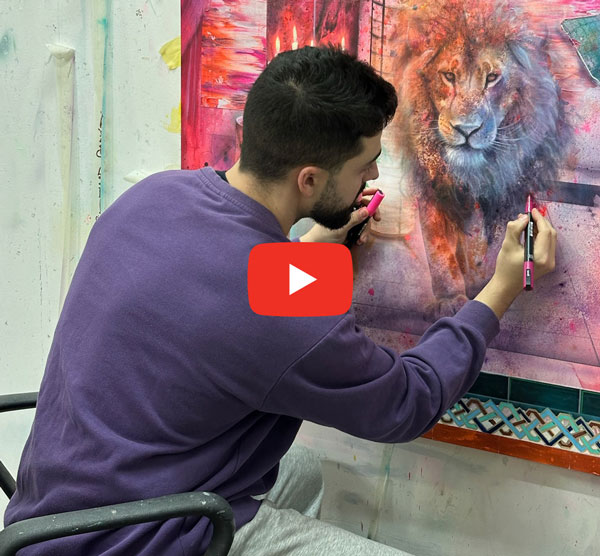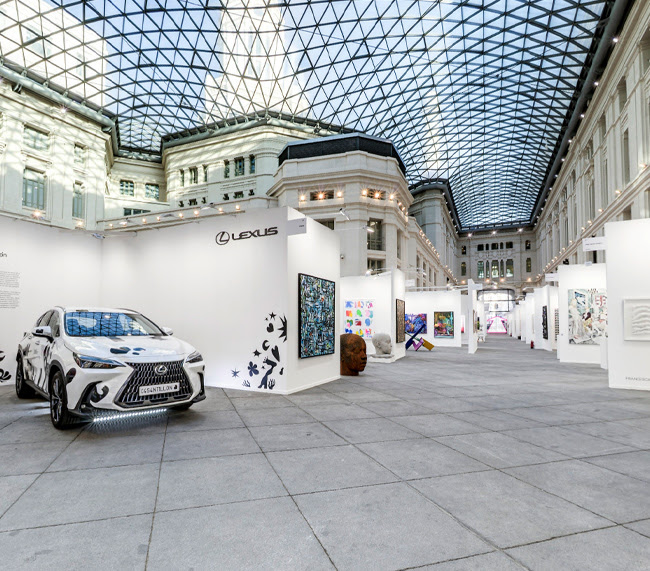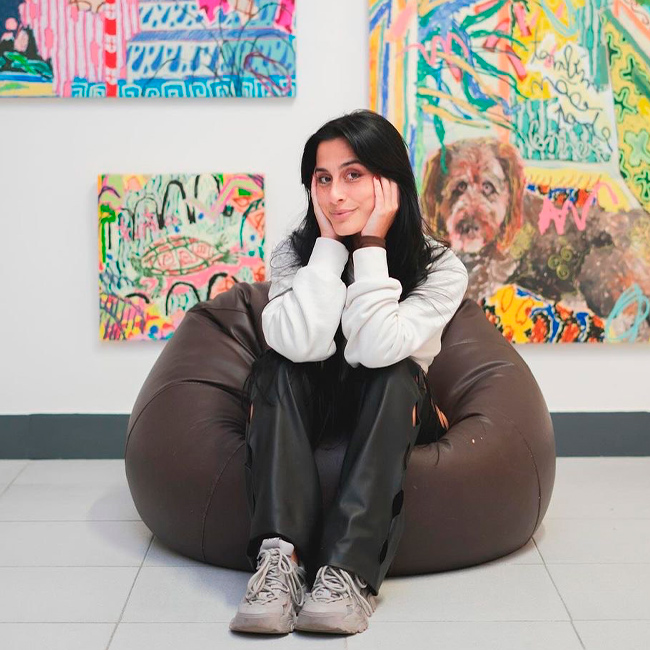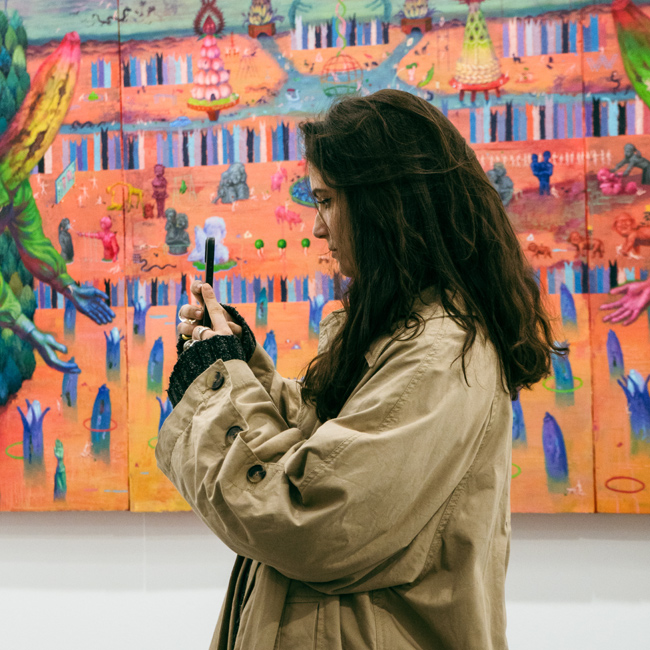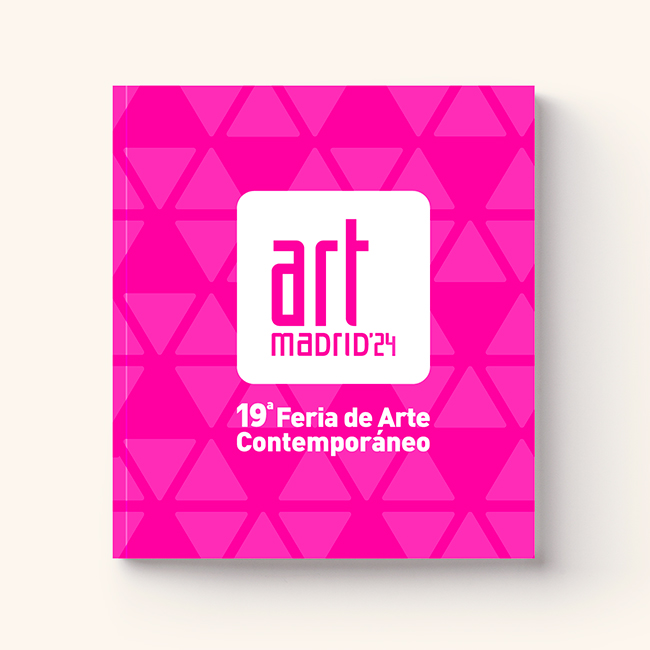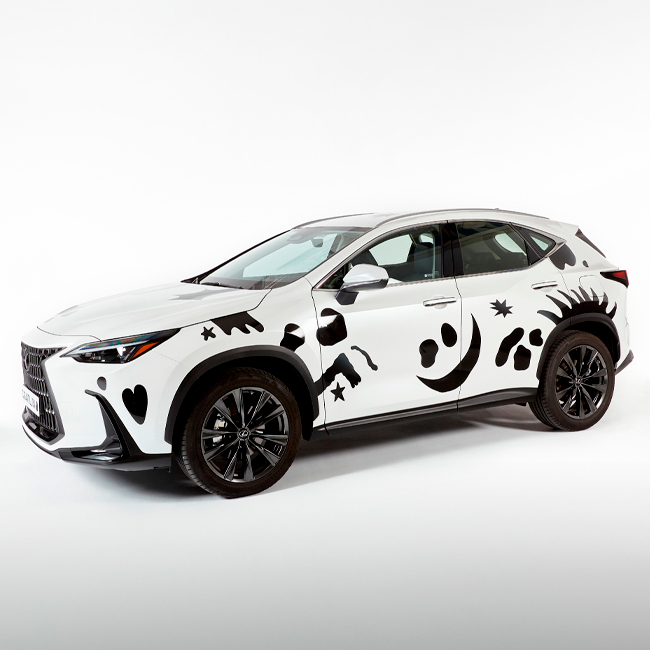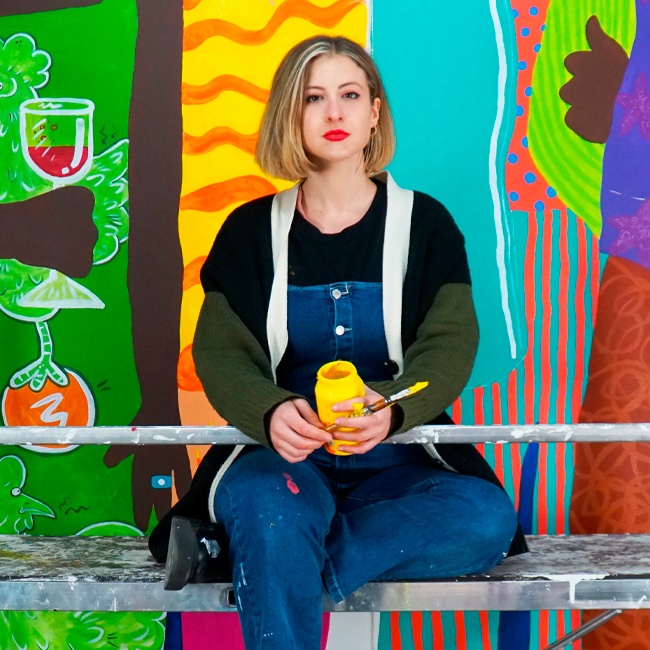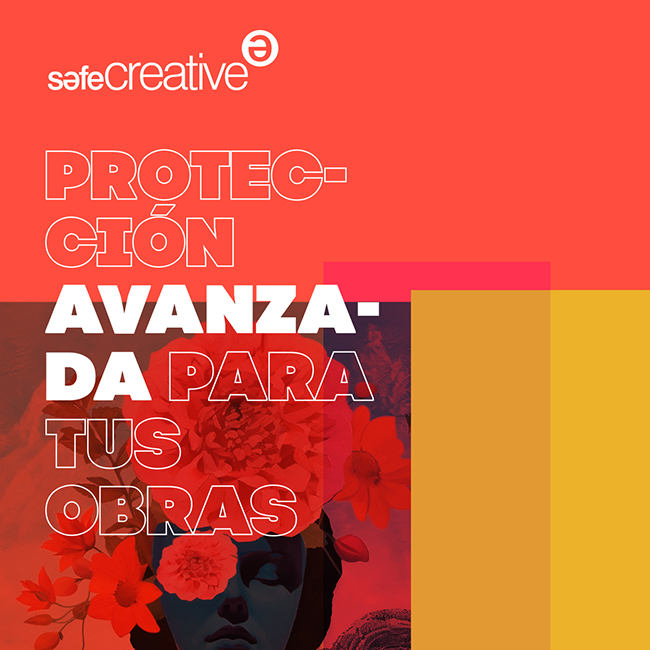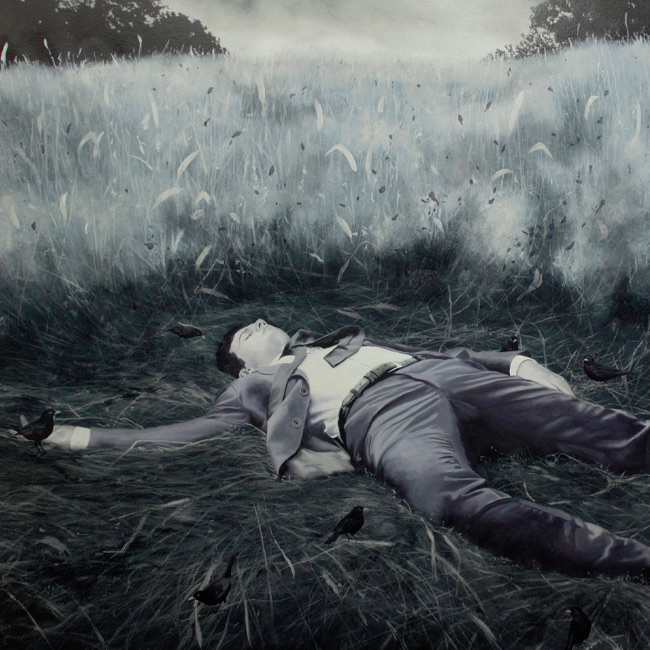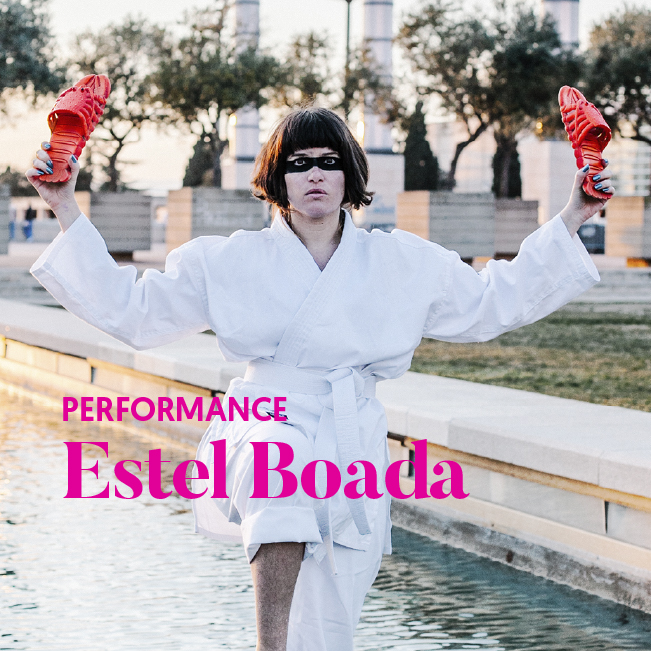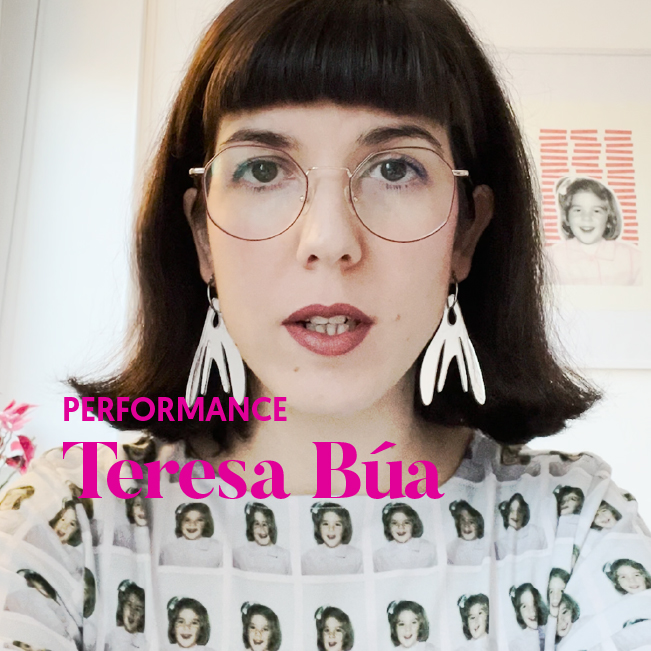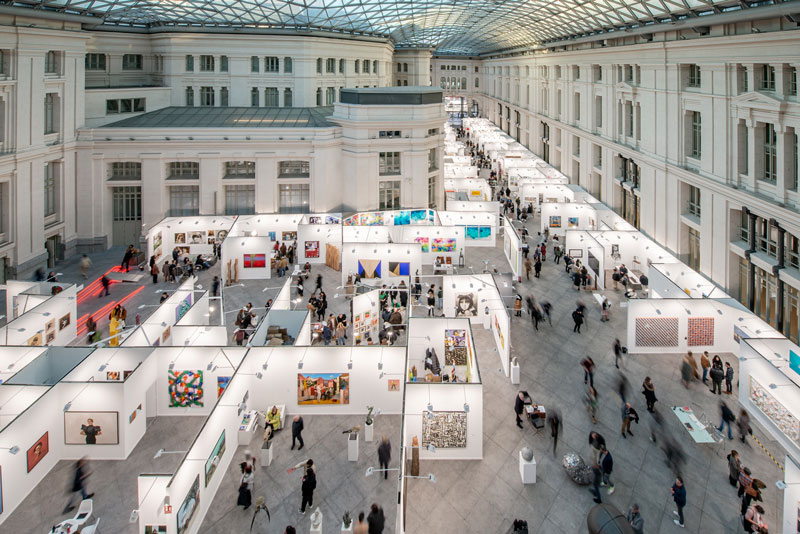RICHARD GARCÍA: THE IMAGINED REALITIES
Feb 10, 2024
art madrid
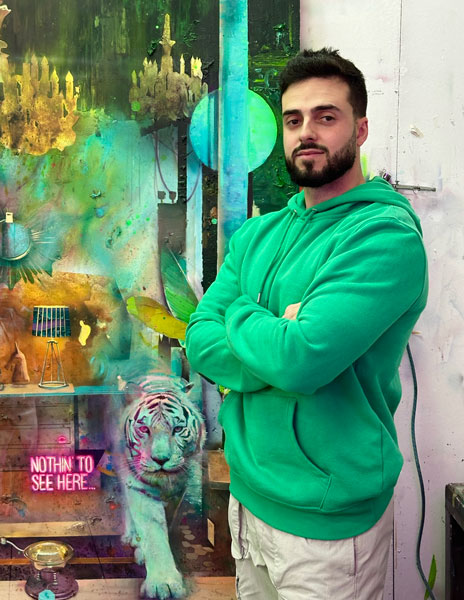
ARTE & PALABRA. CONVERSATIONS WITH CARLOS DEL AMOR
In Richard García's work there is something that captures the viewer's gaze. Whether it's the colour, the recognisable but undefined landscape, or the real but seemingly imaginary creatures that inhabit that landscape, I can't say. There are many layers to lose oneself in in each of his works, and in each one there is something underlying the previous one, as if it had been left there for us to follow the trail of a creative process in which meticulous study and chance seem to follow parallel paths, knowing that somewhere along the way they will meet.
A brushstroke creates a new territory, perhaps covering something that has already been done, but which would otherwise have no identity of its own, and this new territory, delineated by colour, illuminates a new path, a new layer, a new perspective. Richard's street origins are evident, his works have the restless pulse of someone who is moved by the spark of an idea which will be followed by a new one, and aspiration to the end of a work that can be infinite because there are infinite details we can dwell on.
Of course, he gives importance to the dream, and in the end the dream is just that, a superimposition of real layers that in the end form an impossible world. To contradict myself, it is not an impossible world because the artist has made it visible and therefore real. Painted, but real and ready for us to pass through without knowing where it will lead us.

If you had to define yourself in one sentence, which one would you use?
It is often said that to define oneself is to limit oneself, so I don't like to do it. But if I had to, I would describe myself as a passionate, disciplined and dedicated person, and above all a perfectionist.
What is left of the boy who began painting on the walls of the streets?
Everything about graffiti remains, except the anonymity. At high school I made some friends who were involved in the world of graffiti and they shared their experiences and adrenaline filled anecdotes with me, and all of this gave me the desire to try street painting. It came very naturally, the learning process was self-taught, from other colleagues, from urban artists that I had as references. I didn't even have established artists in the history of art as references. It was a beginning that had a profound effect on my development, because it was thanks to them that I decided to study Fine Arts and train as an artist.
In terms of the way I work or paint, I still use the sprays, strokes and gestures typical of graffiti, except that they have been transferred to other supports, such as a wooden board, a canvas or many others. But it is true that in my work I continue to make references to elements that I find in the street and that refer to graffiti, such as writers' signatures, stickers or registers typical of urban art. Let's say it was something I identified with in my early days and that is still present in my work today.

Whenever you talk about your work, the word dream appears. In your paintings all the elements are recognizable but they form an unreal reality. How do you capture, paint a dream?
Actually my creative process is very intuitive, unconscious. I don't really know where it will take me. It is precisely this element of surprise, of the unexpected, of what emerges, that makes my work special, or what I consider to be special, and what emerges from it. In a way, I start from the reality in which I move and I collect moments through photography to later generate a new image through a strategy of digital sketches, where I give myself the freedom to transform it based on my imagination, my desires and my dreams. After all, who doesn't dream, wish, fantasize? It's not so much what I paint as how the viewer wants to interpret my work.
In dreams, everything is superimposed, the images run over each other, and this can be seen in your paintings. It's as if one layer isn't enough, you need several superimposed layers to get to the bottom of what you want to say. When you paint the first one, do you know where you will end up?
It is true that my painting has a transformative power of accumulation of layers as well as thoughts. It all begins as a constant dance between the controlled and the uncontrolled. Through the plastic possibilities offered by the materials I work with, I leave a lot of room from the beginning for chance and coincidence to generate a thousand stimuli which, through the superimposition of layers, will gradually mutate from the more abstract language of painting to a more figurative or recognisable language. I see it as a constant dialogue between what painting offers you in an almost magical way as a discovery and the choices you make in the process to arrive at the final work. That's why there's something magical about painting that takes you to places you never expected.

Maybe it's just intuition, but your work reminded me of Richard Estes' paintings, probably because of the use of reflections. Here's a question in the form of a play on words: How difficult is it to reflect a reflection in a work of art? And in that reflection we can be ourselves or a reality that would not exist if it were not reflected.
Yes, it is true that we both use the concept of reflection in our work, but I think in very different ways. In the case of Richard Estes, I think he uses photography to approach reflection in a more faithful, objective or literal way. It is this aesthetic of photorealism, of hyperrealism, that interests him. In his painting, each part of the image is focused on equally or with equal importance. In my case, I am interested in the sensations created by the reflection itself. When I observe how light hits a glass, a distorted reality is created, where the different spaces overlap, creating a fantasy world that can be imagined. Similarly, where figuration and abstraction are in constant dialogue, something similar happens in my painting.
I'm also very interested in the very plasticity of painting, the way it is done. How each part of the painting is resolved and how the different languages that emerge in the process itself coexist. There is something that is important to me, and that is the reading that the painting itself has, from the first layers and how they emerge in a more intuitive way, or where the accident has a great weight, to the last layers that are more gestural or more closed with more matter, more figuration. But in reality it's not so much whether it's easy or difficult, it's more the process itself and everything that happens during it that leads me to an unreal reality, to create an optical illusion.

Your work takes me to the urban, and yet there are "green" elements, nature, in all of them. The city is becoming more gray and less green, is this an attempt to immortalize spaces that are on the verge of extinction?
I was born in a city where everything has grown and changed, just as I have, and this has influenced my identity or who I am today. In this process of walking in search of stimuli to bring to painting, reflections, experiences, concerns arise that will inevitably be reflected in my work as an extension of myself. It is in this process of walking that I realize how modern life has increasingly distanced nature from our lives. Therefore I create contemporary scenarios in which wild animals - outside their natural habitat - appear to make us reflect on the importance of our origin: nature.
Where do you think your painting is going?
I really don't know. I don't want to think about it directly. Where the painting and the process itself wants to take me. It's the surprise factor and all the magic that painting has, that you can't control, that feeds me so much and I hope to evolve and continue to do it with the same joy, passion and enthusiasm.

